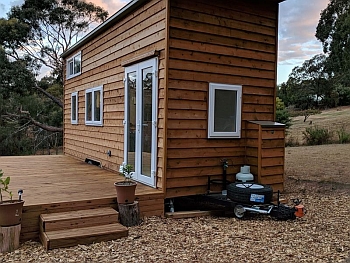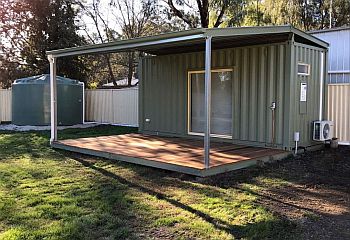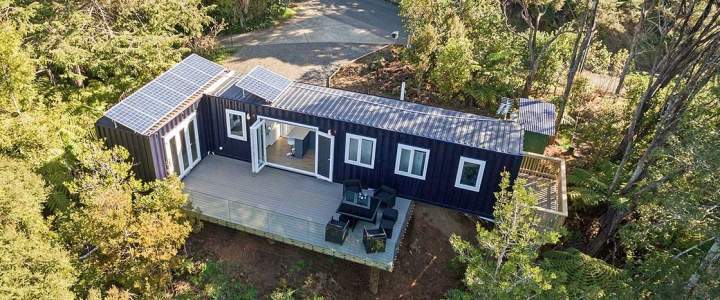Is insulating shipping container homes really necessary? You bet they are. They are made of metal and as we all know metal is a very good conductor of heat and cold. There is a growing trend in Australia and indeed the world to use shipping containers to build cost effective homes. They started out to be used to build simple homes but have grown to create architectural delights as shown in the heading above. This is currently being constructed in Adelaide South Australia that we are applying foam insulation to.
If you are considering building a home using shipping containers insulation is an important aspect that needs to be addressed. The walls although are very strong are after-all thin and their strength comes from the corrugated effect of the walls plus the extra strengthening in each corner. Metal is a very good conductor of heat and cold so it is paramount that some sort of insulation be applied. This needs to be applied walls, ceilings and even the floors or significant heat loss or cold ingress will occur. Furthermore if you are still in the consideration stage of building a shipping container home it may be worth looking at

So how do you do this as space in containers is limited and you do not want to put in framework that would be required if you used conventional insulation methods. (batts, wool etc). Fortunately there is one form of insulation that is tailor made for insulating shipping container homes, “Spray foam insulation”. This brings us to one other point with using conventional insulation, “condensation”.

If there is air space between the insulating material and the insulating medium then condensation will occur on the metal wall between it. This is unavoidable with conventional insulation methods. Using spray foam insulation avoids this, especially the type we use called “closed cell foam”. (Watch the video above as this explains it)
The profile of the walls of the containers is the first issue. Closed cell foam can be applied directly to the metal following its natural shape. Once the closed cell foam is installed it creates an airtight seal and a thermal barrier. Its very important that the insulation adheres to the steel as if there is an air gap as mentioned, condensation will form and become a mould issue. The foam adheres to the steel stopping the dew point so condensation cannot form.
As the foam applied is much thinner than conventional insulating materials there is no encroaching on your valuable space. Our spray foam can be sprayed on the inside, outside, top or bottom the shipping container if required.
What Type of Insulating Foam is Recommended?
The recommended foam type is “closed cell foam” This is because not only does it adhere more effectively to the shipping container homes walls it also has a high r-value for the same thickness than open cell foam. What is just as important it adheres to the metal of the shipping container walls more effectively creating that absolute seal which stops moister from getting to the metal walls.

Are you thinking about building a tiny house? then you should read our page on “Tiny House Insulation” It is also worth reading our “Painting spray foam Insulation” post as well.
SprayFoam Solutions are experts in insulating containers. We are happy to give a consultation on any requirements that are needed for insulating shipping container homes so just give us a call on 0421 395 315 or fill in the form below.


